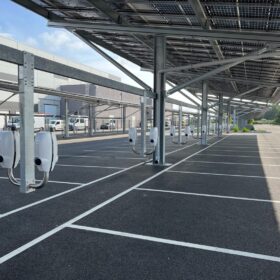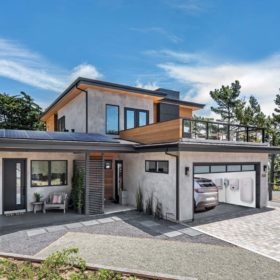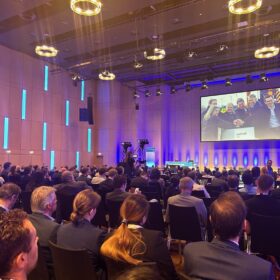Europe says China’s EV value chain benefits from unfair subsidies
The European Union plans to impose tariffs of up to 38% on battery electric vehicles (BEVs) from China, as an ongoing investigation into imports has shown that the value chain benefits from unfair subsidies.
Crash test for lightweight 4-seater solar cars
Researchers at the University of Bologna carried out crash simulations to qualify a novel solar powered 350 kg passenger vehicle for the next edition of the 3,000 km Bridgestone World Solar Challenge (BWSC) across the Australian continent.
Off-grid solar-wind power plant design for green hydrogen generation
Scientists in Czechia have conducted a techno-economic analysis of a green hydrogen production system powered exclusively by photovoltaic and wind energy. The system uses surplus energy for water treatment and, according to its creator, can achieve a levelized cost of hydrogen of $3.12/kg.
Low platinum fuel cells for hydrogen vehicles
New research from Sweden suggests that low platinum fuel cells for hydrogen vehicles, when scaled up for the same number of cells, may achieve similar or higher efficiencies compared to commercial fuel cells. Their modeling is expected to act as a bridge between material science research and vehicle implementation.
IEC develops standards for vehicle-integrated photovoltaics
In its first monthly column for pv magazine, the International Electrotechnical Commission (IEC) explains how a team of its experts is currently working on the definition of new standards for VIPV systems.
CATL presents EV battery with 1,000 km range
Contemporary Amperex Technology Co. (CATL) has shown its latest lithium iron phosphate (LFP) battery at an auto show in Beijing. The Chinese company says it has an energy density of 205 Wh per kg, almost 8% higher than the current state of the art for such batteries.
French winery combines solar carports with EV recharging
Cordier, a winery in Bordeaux, France, is building solar carports at two of its facilities in southern France. The two PV arrays will be tied to 20 EV charging stations.
India overtakes China to become world’s largest electric 3-wheeler market
Sales of electric three-wheelers (e-3W) in India surpassed 580,000 units in 2023, compared to 320,000 vehicles sold in China, according to the International Energy Agency (IEA).
System design for PV-driven hybrid EV charging stations
Researchers in India have simulated a 4 kW solar power-based hybrid electric vehicle (EV) charging station using a three-stage charging strategy and found that the station is capable of charging 10–12 EVs with 48 V 30 Ah lithium-ion batteries.
Key takeaways from Advanced Battery Power + V2G conference
Battery research is advancing to address issues in the lithium-ion development process and concerns about safety and aging. Vehicle-to-everything (V2X) tech, meanwhile, is in the starting blocks, but interoperability is the key hurdle to achieving mass market penetration.










